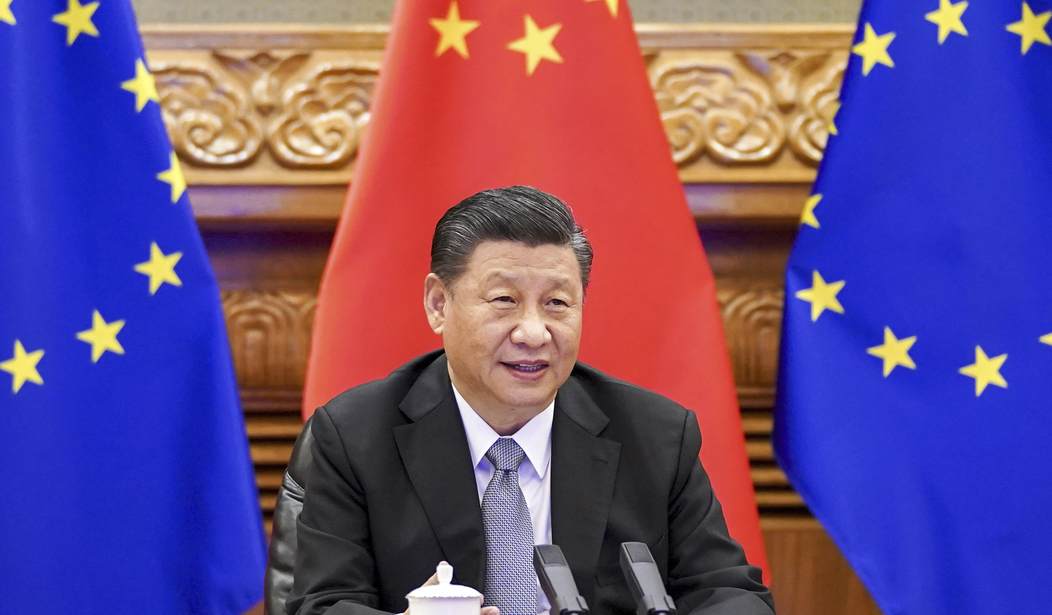During the Cold War, the Commies in the USSR were going to take over the world, especially after they detonated their first nuclear bomb in 1949. Oldsters will remember “duck and cover” drills in the 1950s (Millennials and those younger have no idea what it was like!):
In the 1980s, the New Wave band The Vapors had us “Turning Japanese” as Japanese gobbled up real estate in the US, and some Americans thought that they were “taking over.”
These days, the headlines either state directly or imply that the US must accommodate China in order to prevent a war over Taiwan (here, here, and here), as well as hand over the reins of the free enterprise-based international world order to the “authoritarian capitalism” and merciless mercantilism practiced by the Chinese Communists in Beijing (here and here). After all, the ChiComs are on the march all over the world, having made infrastructure investments in over 138 countries since 2013 under their Belt and Road Initiative. The overarching (grandiose?) BRI goal is to develop a global infrastructure controlled by Communist China, and we mustn’t stand in their way, right? At least according to the state-run ChiCom media and their bought-and-paid-for allies in the US legacy media. Chinese President Xi Jinping already believes that China is the “equal of the United States,” as noted in this piece from The Wall Street Journal:
“China can already look at the world on an equal level,” he told the annual legislative sessions in Beijing in early March, a remark widely interpreted in Chinese media as a declaration that China no longer looks up to the U.S.
Bold words! However, Communist China is running into the same problem that dashed the Soviet and the Japanese dreams: demographics. Let’s look at what happened in Russia and Japan before we check out China.
Russia. Soviet death rates per 1000 people began increasing in 1963 but accelerated greatly after the fall of the Berlin Wall in 1989 to double the 1963 rate by 2003, as shown in the figure below:

Meanwhile, the Russian birth rate plummeted from nearly 28 births per 1000 people in 1950 to a nadir of below 9 births per 1000 people in 1999 – a death knell for Russia given the long-term projections – as noted in the below figure:

The bottom line is that Russia’s population is expected to decline by nearly 20 million by the year 2100, according to UN projections here. How will Russia support an increasingly elderly population, or man their armed forces, or sustain any type of economic growth? No wonder the Russian economy has collapsed, and the country has reverted to being an exporter of raw materials (largely oil and gas) similar to undeveloped countries. And Russia’s gross domestic product for 2019 was estimated at $1.7 trillion by the World Bank, which was only 9% of America’s $21.4 trillion GDP. Vladimir Putin and his former Communists aren’t about to take over the world any time soon (although they do have the world’s largest total inventory of nuclear warheads as of March 2021).
Japan. Japan was an engine of economic growth in the 1980s, but their demographics problems undermined their long-term plans. Japan’s declining birth rates are even worse than Russia’s, from nearly 27 births per 1000 people in 1950 to just over 7 births per 1000 people in 2021. The UN projections through 2100 are equally dire, as shown in the below figure:

The result is an aging Japanese population, with the median age increasing every year since 1950 from 22.3 years to the present 48.4 years, as shown in the below figure, with 20 percent of the population over 65 years of age:

Japan Median Age (Credit: Statista)Japan’s manpower problems started to be seen in the 1980s and have since become acute. Due to the lack of replacement workers for Japanese reaching retirement age, tthe effects on the Japanese economy going forward are disastrous:
[T]he direct impact of Japan’s skewed demographics is projected to have a real GDP fall of about 20 percent in the next century and decrease annual GDP growth one percentage point over the next three decades.
The bottom line is that the concerns in the 1980s that the Japanese economy would eventually eclipse America’s were vastly overblown – demographics über alles!
Communist China. Partly thanks to their crackpot one-child policy (one child per family) that was implemented in the late 1970s in order to limit China’s population growth, the ChiComs have a serious demographics problem on their hands, too. And the one-child policy exacerbated another demographics problem:
The one-child policy produced consequences beyond the goal of reducing population growth. Most notably, the country’s overall sex ratio became skewed toward males—roughly between 3 and 4 percent more males than females. Traditionally, male children (especially firstborn) have been preferred—particularly in rural areas—as sons inherit the family name and property and are responsible for the care of elderly parents. When most families were restricted to one child, having a girl became highly undesirable, resulting in a rise in abortions of female fetuses (made possible after ultrasound sex determination became available), increases in the number of female children who were placed in orphanages or were abandoned, and even infanticide of baby girls.
The combined result has been an aging population and a declining birth rate, as well as a gender imbalance (approximately 30 million more men than women looking for marriage partners), which resulted in the implementation of the two-child policy in 2016 (and recent recommendations from the People’s Bank of China – the Chinese central bank – to drop the limit altogether). China’s birth rate per 1000 people has decreased from 46 births in 1950 to just over 11 births in 2021, as shown below:

As reported by Reuters, “The number of babies born in China fell by 580,000 to 14.65 million in 2019 and the birth rate of 10.48 per thousand was the lowest since 1949 when present methods of collating data began, according to the National Bureau of Statistics.” However, with the increased longevity among Chinese citizens due to better diets and medical care, the ChiComs are forced to divert more economic resources to social support programs for retired Chinese. The median age for the Chinese population has increased to nearly 38 years in 2020 and is expected to reach 49 years by 2065 – an enormous problem for a country projected to have nearly 1.3 billion then.

Communist China’s demographic trend creates a serious problem for the ChiComs. Their domestic claim to legitimacy that justifies the Communists’ retention of power has been increasing living standards maintained through explosive growth over the last two generations. That growth is threatened by an aging workforce, a decline in replacement workers, and a continued low birth rate and imbalance of men and women of child-bearing age.
A delicate balancing act and challenge for China’s “authoritarian capitalism” model! Some have claimed that “Communist economist” is an oxymoron based on past performance, with the ChiComs’ vaunted growth bubble likely burst due to a host of problems, e.g., massive default risks, over-built real estate, an increasing ratio of corporate debt to GDP, a looming debt crisis, and opaque financial reporting. While attempting to balance the aforementioned economic challenges in the near term, will the country that some say invented corruption (or certainly perfected it over the years) be able to pull a rabbit out of a hat and keep their people pacified sufficiently through increased living standards to keep the Chinese Communist Party in power? Or will the demographics monster strike them down as happened to Russia and Japan? Demographics drive a country’s destiny!
The end.














Join the conversation as a VIP Member